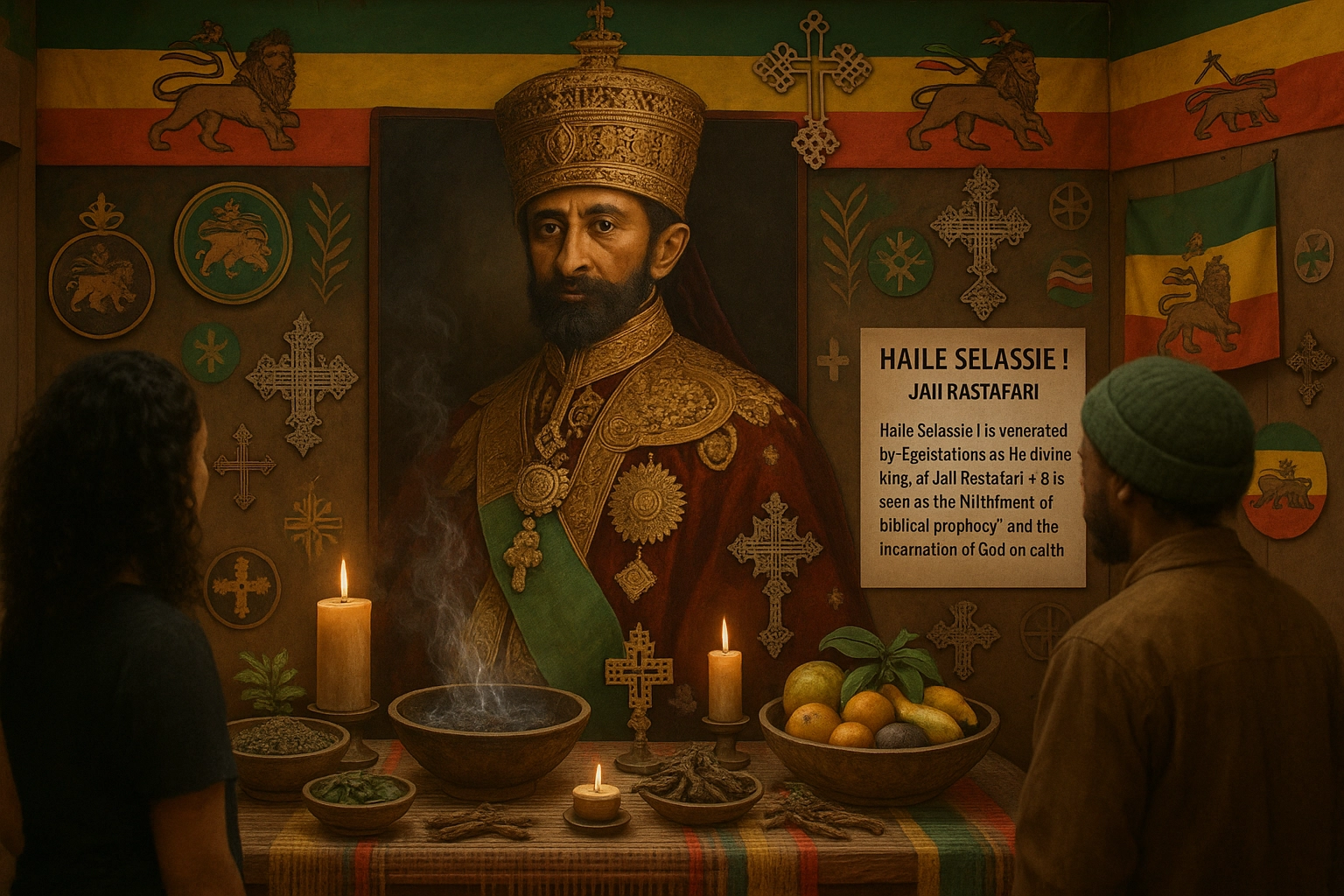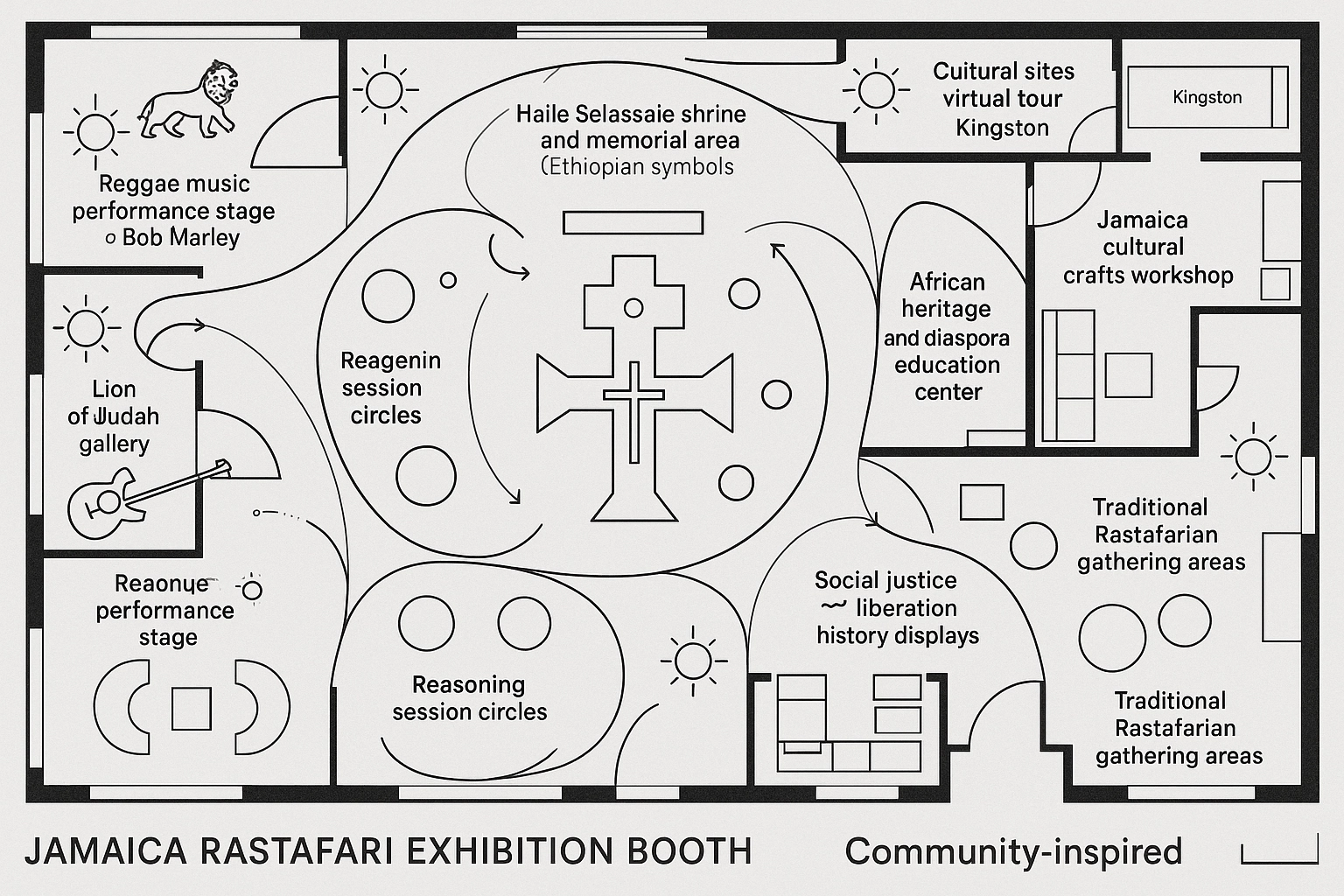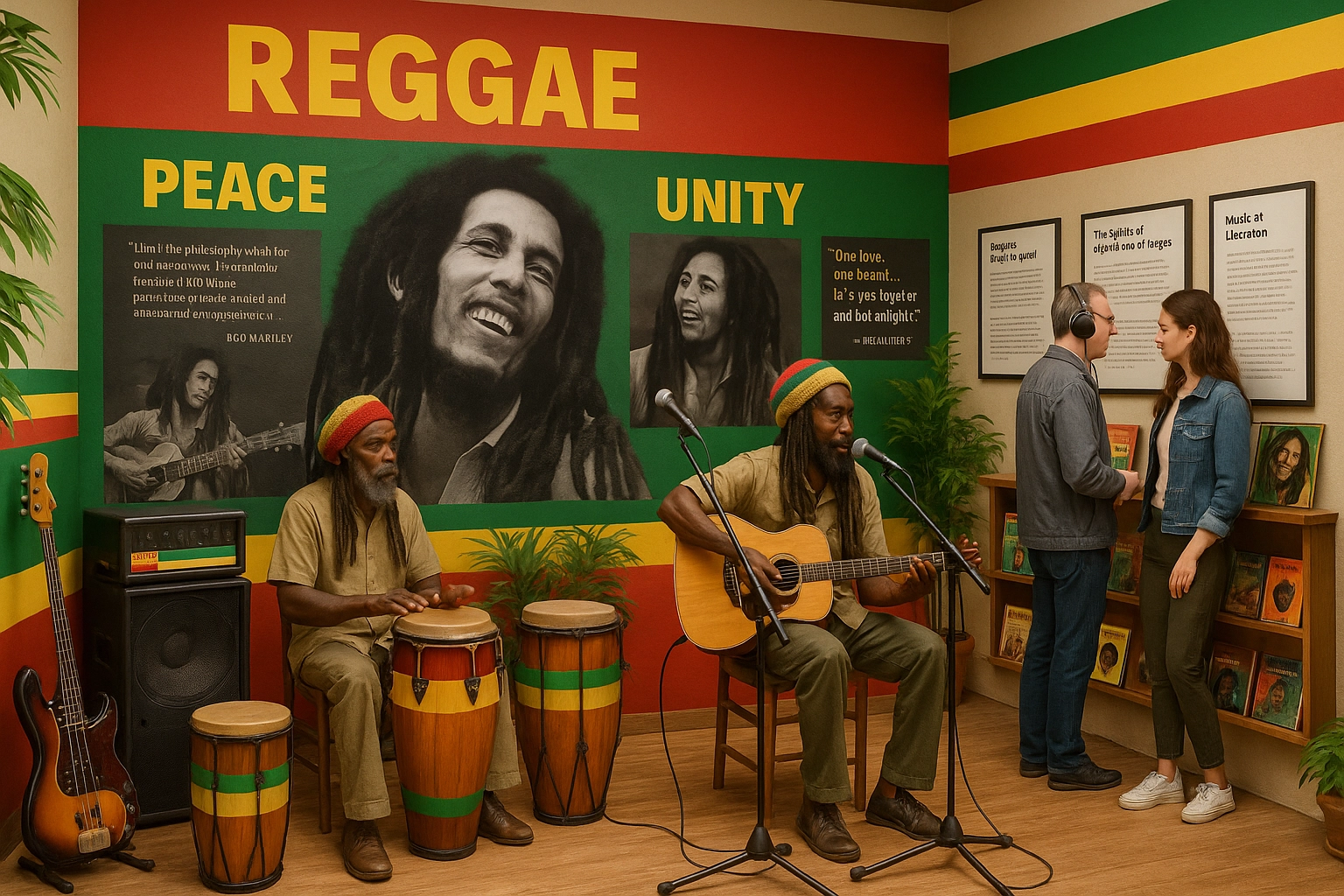Jamaica: Rastafari Exhibition
Discover the roots, redemption, and reggae culture of Jamaica's Rastafari movement through our immersive exhibition experience
Exhibition Layout & Experience

Exhibition Floor Plan
Interactive layout showing reasoning areas, music spaces, and cultural displays

Main Exhibition Hall
Featuring reggae heritage, spiritual artifacts, and cultural displays

Sacred Cultural Space
Traditional space with Lion of Judah symbolism representing spiritual liberation
Historical Origins
The Rastafari movement originated in Jamaica in the 1930s, emerging from the social conditions of post-slavery colonialism and the yearning for Black liberation. Inspired by the coronation of Haile Selassie I as Emperor of Ethiopia in 1930 and the teachings of Marcus Garvey, Rastafari represents a conscious return to African identity, dignity, and spiritual sovereignty.
Emergence & Development
Rastafari grew as a grassroots, anti-colonial movement among Jamaica's poor and disenfranchised communities. Central to its rise was the prophecy of Marcus Garvey—"Look to Africa for the crowning of a Black King"—fulfilled in the eyes of followers by Haile Selassie's ascension. From its origins as a marginalized sect, Rastafari developed into a global spiritual, cultural, and social phenomenon.
Key Figures & Leaders
Haile Selassie I
Emperor of Ethiopia, revered as the living God (Jah) and descendant of King Solomon.
Marcus Garvey
Jamaican nationalist and Pan-African prophet whose teachings inspired the movement.
Bob Marley
Global ambassador of Rastafari whose reggae music spread the message worldwide.
Core Beliefs & Concepts
Jah Rastafari
The divine manifestation of God in Haile Selassie I.
Zion and Babylon
Zion as spiritual homeland; Babylon as oppressive system.
Ital Living
Natural, plant-based lifestyle respecting earth's creation.
I and I
Concept of oneness, unity reflecting divine presence in all.
Fundamental Principles
Spiritual Autonomy
Direct connection with Jah, beyond religious institutions.
One Love
Nonviolence and peace, seeking harmony and reconciliation.
Equality & Dignity
Affirmation of Black pride and universal human worth.
Community Reasoning
Shared wisdom through collective dialogue and gatherings.
Sacred Symbols
Lion of Judah
Emblem of African royalty, courage, and messianic lineage.
Red, Gold, Green, Black
Colors representing blood, heritage, hope, and African identity.
Dreadlocks
Sign of naturalness and spiritual covenant, inspired by Nazarite vow.
Nyabinghi Drum
Instrument of worship, unity, and divine communication.
Major Rites & Ceremonies
Reasoning Sessions
Group gatherings for spiritual dialogue and meditation.
Nyabinghi
Sacred drumming, chanting, and dancing rituals for praise.
Groundation Day
Celebrating Haile Selassie's visit to Jamaica (April 21, 1966).
Ital Feasts
Communal sharing of natural foods as spiritual practice.
Global Influence & Cultural Impact
Reggae Revolution
Once a marginalized Jamaican movement, Rastafari today resonates globally, shaping music, culture, language, and consciousness. Reggae, led by artists like Bob Marley, spread Rastafarian ideals of liberation, peace, and unity worldwide.
Cultural Renaissance
Rastafari inspired anti-colonial activism, Black empowerment, and cultural renaissance in the Caribbean, Africa, and beyond. It challenged systems of oppression and advocated for reparations.
Worldwide Communities
Rastafarian communities exist across Jamaica, the Caribbean, the Americas, Africa, Europe, and the Pacific. The movement is especially strong in Kingston, Shashamane (Ethiopia), and diaspora communities worldwide.
Important Scriptures & Texts
King James Bible
Central source of doctrine and prophecy
Kebra Nagast
Ethiopian text tracing Solomonic dynasty
Haile Selassie's Speeches
Guiding words on peace, justice, and universal rights
Marcus Garvey's Writings
Foundational philosophy of Black empowerment
Sacred Places & Monuments
Pinnacle
First Rastafarian community founded by Leonard Howell in Jamaica
Shashamane, Ethiopia
Land granted by Haile Selassie for repatriated Africans
Bob Marley Museum
Center for Rastafari heritage and reggae history in Kingston
Ethiopian Orthodox Churches
Honored as spiritual homes of the movement
Memorable Quote
"Emancipate yourselves from mental slavery; none but ourselves can free our minds."— Bob Marley, Rastafarian prophet and global messenger